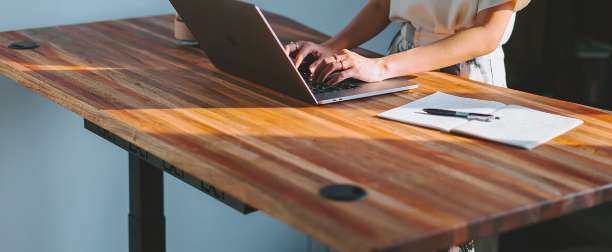Cheaper Options: Making Your Own Standing Desk

Many people are turning to do-it-yourself (DIY) standing desks as a cost-effective and customized solution in a world where workplace furniture selections can sometimes come with a costly price tag. These do-it-yourself options allow you to design a workspace that meets your demands without exceeding budget. We’ll examine the world of DIY standing desks in this post, providing sincere observations, helpful advice, and persuading arguments for why making your standing desk would be the best option for you. We’ll avoid jargon and information overload while presenting the case for inexpensive DIY options in an approachable and humane way.
The Allure of Homemade Standing Desks
Cost-Effectiveness:
One of the main factors influencing individuals to build their standing desks is affordability. Traditional standing desks can be pricey, but you can make your own at a far lower cost with imagination and ingenuity.
Customization:
Self-made standing workstations may be substantially customized. The design may be modified to meet your unique requirements, ensuring your workstation is cozy and practical.
Creativity:
You may let your imagination go wild by making your standing desk. You may select the components, hues, and design features that match your aesthetic preferences and workstation.
Sustainability:
Many do-it-yourself standing desk projects use recycled materials or eco-friendly alternatives. The emphasis on environmental responsibility is expanding, and this sustainable strategy aligns with it.
DIY Ideas for Standing Desks
Here are some DIY standing desk concepts to motivate you to design your workspace:
1. Simple Wooden Desk:
Converting an existing desk into a standing desk is one of the most straightforward DIY solutions. Using wooden risers or solid boxes, adjust the height of your keyboard and monitor size for comfort.
2. Wall-Mounted Desk:
If you lack room, consider a standing desk mounted to the wall. Use a strong shelf or wooden board attached to the wall at the appropriate height for your workplace.
3. Adjustable Desk Converter:
Convert an outdated bookshelf or side table into an adjustable standing desk. Include a platform that may be adjusted to allow standing and sitting.
4. Door Desk:
Convert a large door with a strong core into a standing desk. Add legs or brackets to support the door’s weight and provide a helpful workplace.
5. Collapsible Desk:
A collapsible standing desk allows the simplicity of storing it away when not in use, which is ideal for people with limited space. Create a folding table that can be fastened to the wall using hinges.
Benefits of Choosing a DIY Approach
Affordability:
A DIY standing desk may be made for far less money than commercial versions using easily accessible components.
Personalization:
You have total control over the layout and may construct a workspace that meets your requirements and tastes.
Resourcefulness:
Creating your own standing desk fosters creativity and problem-solving abilities by using things you already have.
Sustainability:
Upcycling and repurposing materials are common in DIY projects, which helps to reduce waste and promote sustainability.
Selecting tools and materials
It’s critical to choose the appropriate supplies and tools before starting a DIY standing desk project:
Materials:
Wood: For your desk surface, consider using plywood, solid wood, or repurposed wood. It is reliable and flexible to your preferences.
Legs or Supports: To support the weight of the desk, you’ll need legs, brackets, or wall mounts, depending on your design.
Screws and Fasteners: Ensure you have the proper screws and fasteners to construct your desk adequately.
Tools:
Measuring tape: A productive workstation requires precise measurements.
Saw: Materials will need to be trimmed to size using a saw.
Drill or Screwdriver: Use a drill or screwdriver to connect the components firmly.
Level: A level makes sure your desk is balanced and upright.
Tips for Assembly and Safety
Remember these ideas as you start your DIY standing desk project:
Plan carefully: Before cutting or constructing, measure your area, consider ergonomics, and plan your design.
Safety First: Wear the proper protective gear, especially while using power tools, to ensure your safety. Guard your hands, ears, and eyes.
Stability Matters: Ensuring your DIY desk is solid and able to withstand the weight of your equipment is essential.
Cable Management: Plan for cable management to keep cords organized and guard against dangers.
Test and Adjust: Once your desk is put together, examine it for stability and make any needed modifications.
Conclusion
The allure of DIY standing desks comes not just from their affordability but also from the chance to design a unique and environmentally friendly workstation. Make a standing desk that adequately meets your demands by using materials that complement your style and reusing items you already own. DIY standing desks provide an appealing substitute for commercial choices, whether you’re looking for a cost-effective solution or a creative outlet. So be creative, put your hands to work, and experience the thrill of creating a custom standing desk for yourself.






























